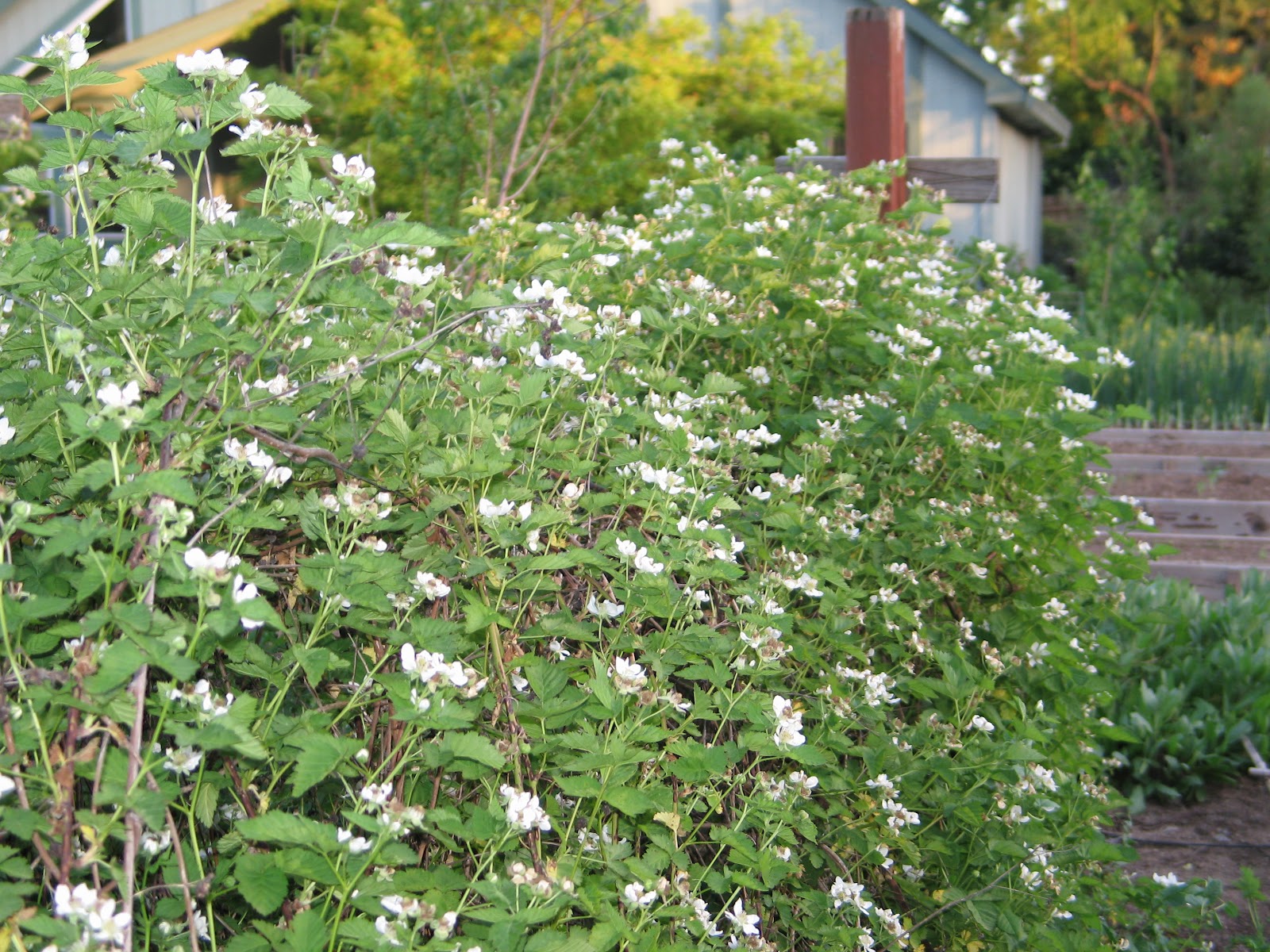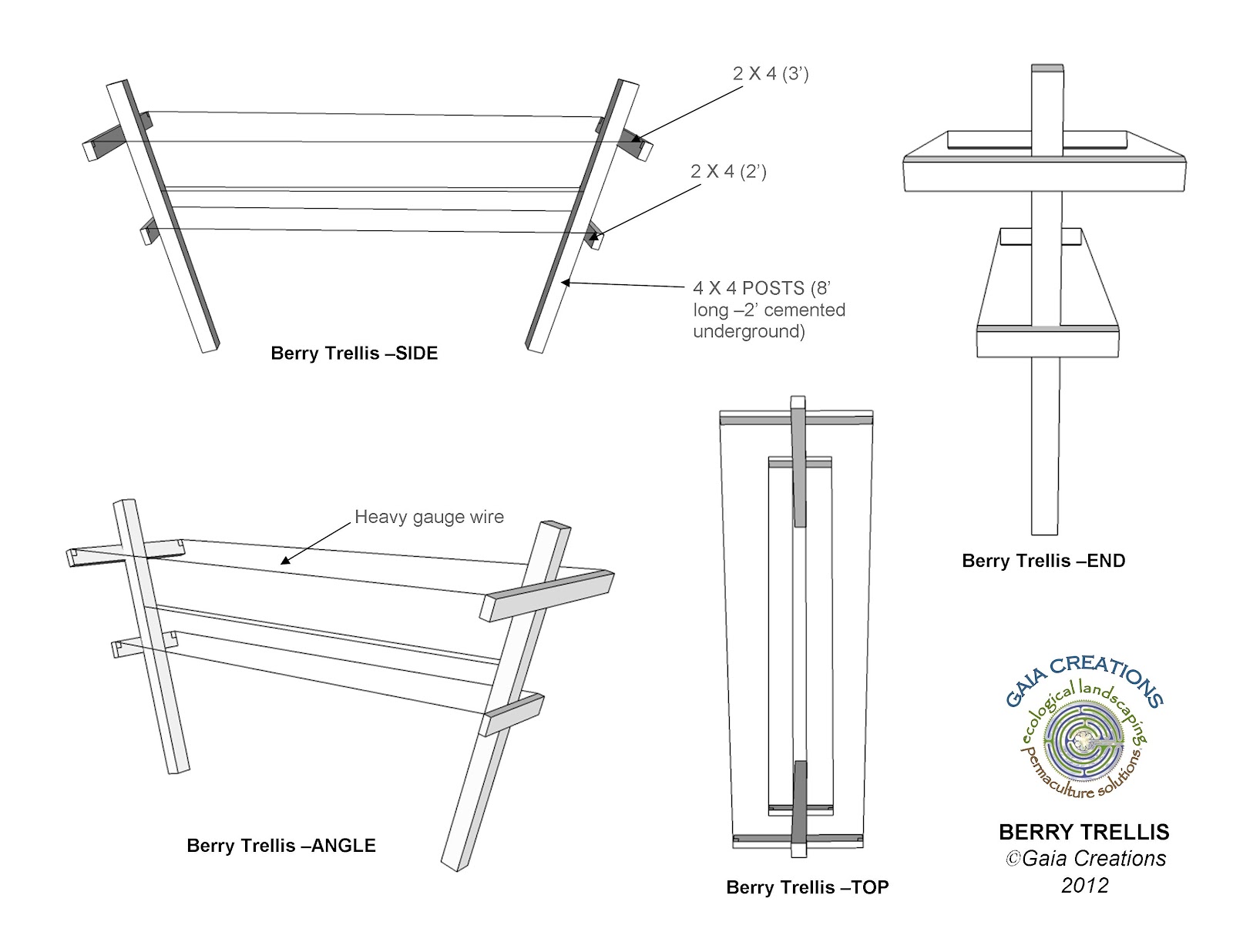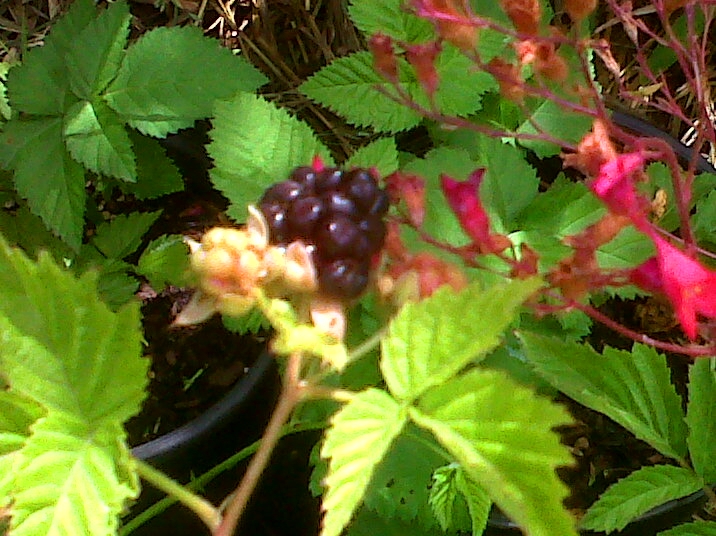


|
Joined:
|
03/02/2011 |
|---|---|
|
Last Updated:
|
18/02/2011 |
|
Location:
|
Chico, California, United States |
|
Climate Zone:
|
Mediterranean |
|
Gender:
|
Female |
|
Web site:
|
https://www.gaiacreationsecoland.com/ |
(projects i'm involved in)
(projects i'm following)
Back to Stephanie Ladwig-Cooper's profile
Posted by Stephanie Ladwig-Cooper over 12 years ago
 Marionberries on trellis
Marionberries on trellis
Eating berries is one of my favorite summer activities. Saving them for later use is also a favorite past time. There are many ways of preserving berries -making jams and jellies, canning or freezing them whole or even dehydrating them for a hiking snack with nuts and seeds. Anyway you do it berries are an awesome treat.
As I sweat over the baskets of ripe sweet abundance I’m harvesting I think of the cold and wet time of the year I’ll be able to eat them. It cools me off and makes me happy to wipe my brow. Then I know I’m able to pull some berries out of the freezer mid-winter to add to my oatmeal with a little crème fraiche and maple syrup –it’s something I can look forward to when I’m spending time harvesting the berries during the hot summer months.
Frozen Boysenberries
Most berries (while technically not true berries they are an aggregate fruit made of druplets) are easy to care for. You do need to make sure they have ample water during the dry season which is easily achieved with a drip system. You can also guild build the berries by planting under and in between them to help cover the soil for added moisture retention. Using plants with multiple functions is an added treat. For example, borage will help bring in pollinators for increased berry yield, they have edible blue flowers and are a dynamic accumulator plant. For a refreshing summer drink we’ll add borage flowers, applemint and fresh berries to our lemonade.
Borage flowers with pollinator honey bee
Without going into tremendous detail on Berry pedigree Boysenberries (and Olallaberries, Marionberries, Loganberries etc.) are a hybrid cross between Blackberries and Red Raspberries (respectively) and produce trailing canes which need help off the ground for easier harvest. When the berry plants are dormant in winter you need to ensure old canes (the canes which flowered last year) are cut back so new canes can grow in easily; most Blackberries and Boysenberries flower on canes in their second year so ensure you are only cutting some of the canes from which you harvested berries. Overcrowding of canes can limit the yield of your berry harvest so this type of seasonal pruning is important.
Red Raspberries are a little different; they can flower on their first year’s growth and can provide two harvests in one season or with some cultivars they are ‘everbearing’ producing raspberries all season long –as long as you continue to pick them! True Red Raspberries generally have an erect growth habit and can spread vigorously so make sure you give them some room so they won’t be a constant maintenance issue. Any ‘suckers’ which appear out of place can be potted up and given to friends or family –they make a great gift!
Harvesting berries tends to be one issue that folks encounter if not trellised well. We've found the trellis design below to be one of the best methods to help the upward growth of all types of trailing berries to make it a lot simpler for harvesting.
 Berry Trellis Design using Google SketchUp
Berry Trellis Design using Google SketchUp
The trellis has 3 sets of wires up the main 4x4 post each spaced apart differently. The bottom wire is spread about 2’ feet wide while the middle wire is closer together –on the 4x4 post itself. The top wire is spread about 3’ wide allowing the trailing canes to grow up through the bottom wire, then in the middle wire (though not all will), then up again through the top wire and out. This provides an excellent pattern for airflow and harvest giving the berries a support network which produces tons of berries that are easy to pick.
We currently have a few Thornless (or prickle-free according to the experts) Boysenberry plants for sale. These berries are sweet and juicy and are excellent for jams or pies and freeze well too. The thornless variety of berries are by far the easiest to pick when trellised as they never poke your arms or fingers as you reach through the canes to harvest!
 Thornless Boysenberry
Thornless Boysenberry
You must be logged in to comment.


| course |
| Type: Permaculture Design Certificate (PDC) course |
| Teacher: Cathe' Fish |
| Location: Nevada City, CA |
| Date: Mar 2009 |

| Advanced Permaculture Intensive |
| Type: Earthworks |
| Teacher: Geoff Lawton |
| Location: GreenFriends Farm - Castro Valley, California |
| Date: Oct 2012 |

| Edible Forest Gardens & The Commercial Food Forest |
| Type: Other |
| Teacher: Eric Toensmeier |
| Location: Urban Roots Farm |
| Date: Oct 2013 |

| Soil Food Web Intensive: Microscope Use |
| Type: Soil Biology/Compost |
| Teacher: Elaine Ingham |
| Location: Green Friends Farm |
| Date: Mar 2014 |

| Permaculture Theory & Practicum, Open Consultancy |
| Type: Other |
| Teacher: Darren Doherty |
| Location: Green Friends Farm |
| Date: Aug 2014 |